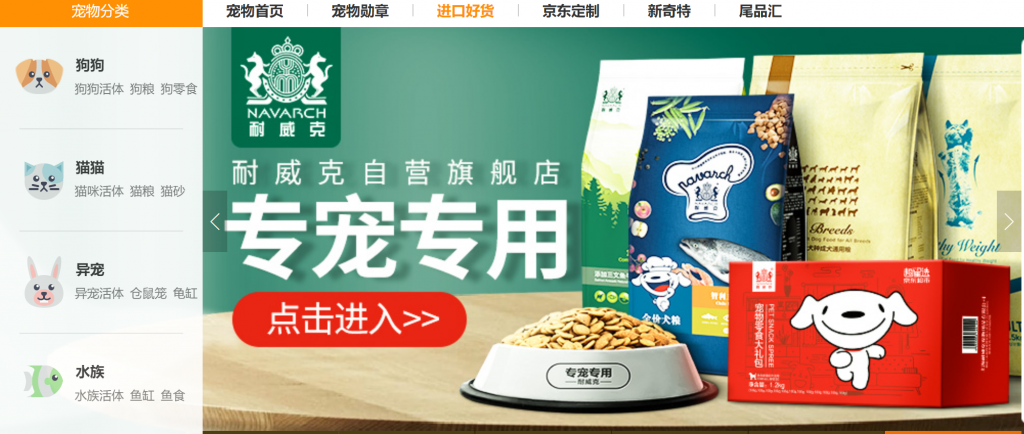In early May, China’s social media landscape buzzed with disturbing details of an emerging mail-order pet craze trending since at least January. Local animal rights activists published videos online revealing dozens of small crates containing puppies and kittens, thirsty and starving, neatly arranged outside of a dingy Chengdu depot. City authorities addressed the illegal activity by, astonishingly, returning to sender; never mind that they botched the return address. Current Chinese law prescribing the treatment of animals is intended to ensure sanitation and disease prevention in food products—i.e., the animals themselves—not promote animal welfare. While these animals may have been considered potential meals in some regions in years past, the mail-orders from last month were instead unwitting participants in a nascent ecommerce practice for sending and receiving surprise unknown goods, dubbed “blind boxes.”


For Chinese netizens, this phenomenon was a stark reminder of how far China still has to go in addressing animal abuse. Despite repeated calls from civil society, animal cruelty laws remain squarely off the books. Yet, the fact that the videos generated widespread controversy also highlights a progress of sorts. Pet ownership, once rare in China, is dramatically increasing as the everyman’s relationship with and understanding of animals continues to evolve alongside the country’s rapid social and economic development. The very existence of blind-boxed mail orders of pets, troubling as it may be, sends another signal: China’s pet industry is booming.
King of consumer goods
During last year’s 11/11 or “Single’s Day,” China’s—and the world’s—largest ecommerce event, cat food, of all things that can be purchased online, was the top-selling category on Tmall Global, Alibaba’s cross-border ecommerce marketplace. Other pet-related goods and services are also performing well. According to figures from China’s National Bureau of Statistics (NBS), the compound growth rate of China’s pet industry was 49.1 percent from 2010 to 2016. That’s the fastest growth among all consumer goods categories. In the past 10 years, China’s pet economy, including food, toys, and supplies, in addition to the pets themselves, has grown by an astounding 2000 percent.
As China has opened up to the rest of the world, its younger generations have been brought up with a more cosmopolitan worldview, which includes the notion of dogs and cats as companions to be cherished and nurtured.
This trend shows no signs of abating as huge portions of the market remain relatively untapped. According to Euromonitor International, the total number of China’s pet dogs and cats only surpassed that of the US in 2019, despite China’s human population exceeding that of the United States by nearly fivefold. While differences in culture, infrastructure, and lifestyle suggest it is unlikely China’s pet ownership rate will catch up to that of the United States anytime soon, it is clear there is room for growth, especially among certain consumer groups.
As China has opened up to the rest of the world, its younger generations have been brought up with a more cosmopolitan worldview, which includes the notion of dogs and cats as companions to be cherished and nurtured. Remarkably, roughly half of Chinese pet owners are under 30 years old. Sixty-five percent hold a bachelor’s degree in a country where, according to official census data, only 15.5 percent of the country has benefited from tertiary education. Even with such disparity, Chinese pet ownership has, by all accounts, become significantly more inclusive over the past decade. In addition to potential owners, market offerings are expanding too. Slightly more exotic pets such as geckos, hedgehogs, groundhogs, and chinchillas have entered the public consciousness. More unconventional than exotic, city residents are literally walking (leashed) alpacas on the streets of Beijing.


A new way of thinking
The developed world’s current conceptualization of owning or caring for pets is a relatively new way of thinking for most people in China. While experts agree that East Asia is likely where the domestication of dogs first took place (cats were likely first domesticated in Egypt and became more common in China thousands of years later), early humans’ relationship with animals was one of utility, and this persisted for most of China’s history. For example, dogs were commonly raised for their meat up until the Tang Dynasty (618-907), during which Buddhist acolytes sought to ban the practice.
While dogs—and cats, for that matter—have been off the menu for many in China, especially society’s elite, for over a millenia, there is little evidence to suggest pet rearing in the modern sense was common among the masses. Between 1983 and 1993, dogs were banned in most Chinese cities due a serious rabies pandemic. Not long prior to the 1983 bans, Chairman Mao Zedong’s Red Guards exterminated pets, a surefire sign of bourgeois living, during the Cultural Revolution. As a breed, the shar-pei came close to extinction. But as the numbers show, history has done little to dissuade China’s growing number of pet owners.
Language, too, offers another window into this new aspect of middle-class Chinese society. Boasting over 375,000 entries, the “hànyǔ dà cídiǎn” (汉语大词典) is widely considered to be the most inclusive Chinese-language dictionary, yet its 1.5 million or so citations do not contain a single mention of the word pet, “chǒngwù” (宠物).
The new bourgeoisie
These days, freshly groomed poodles donning wool sweaters and colorful booties stroll down Shanghai’s colonial European promenades. Ragdoll cats sit lazily in high-end coffee shops and board game cafes, eating canned fish products technically fit for human consumption. Chinese dogs eat even better. In 2018, the average amount spent annually on food was slightly north of RMB 2,000 per dog. For perspective, consider that approximately 40 percent of China’s population earns below RMB 12,000 per year as of 2020, according to national government statistics.
By 2023, China’s pet industry is estimated to reach RMB 472.3 billion in combined annual revenue. This would represent an 800 percent increase compared to 2013.
Not only is pet ownership sharply rising, but Chinese pet owners are spending more on their animal companions’ food and welfare. While pet ownership has increased by 300 percent since 2013, the pet economy as a whole has grown by a dizzying 400 percent. This industry includes many of the same subcategories found in human consumption; food, medical services, medical products, grooming and beauty, toys, general supplies, training and education, and daycare, among others. Heretofore unimaginable products and services continue to enter the market. Some of the more decadent choices include a few that have only just recently emerged in the West, such as doggie dating apps and massage treatments. By 2023, China’s pet industry is estimated to reach RMB 472.3 billion in combined annual revenue. This would represent an 800 percent increase compared to 2013.
Unsurprising to many China residents, about 90 percent of pet consumables sold in China are purchased online. Food, being a necessity, boasts the most impressive sales figures. According to Daxue Consulting, three foreign companies dominate 70 percent of the pet food market share in China. Anecdotally, this is in part due to consumer trust in foreign food brands to deliver on safety and nutrition. The same thinking was infamously applied to infant formula and cosmetics following a series of scandals in 2008, and lingers to this day. Domestic players are several decades late to the part, but will slowly but surely catch up as the market continues to mature. The literally million-dollar question is how fast.


Meanwhile, we can expect the regulatory environment to mature, too. Activists and concerned citizens will drive some of the changes to come, as well corporate-social responsibility initiatives and other efforts born out of necessity. For example, on May 1, China’s central government put dog owners on notice with a directive forbidding unleashed dog-walking. It will certainly be interesting to see data on leash sales in its wake when the numbers become available.
The culture and market around pet ownership in China is changing; in most ways, for the better. Instances of animal cruelty do occur, just as they do everywhere, but the fact that these happenings, like sending potential pets via “blind boxes,” are now worthy of major headlines and public outrage points to increasingly more humane outlook toward animals in China than seen in the past, even if it is taking hold slower in some pockets of society than in others. Businesses should take note. As attitudes continue to shift, more products and services built around caring for, and even spoiling, our animal companions will not be far behind.






























